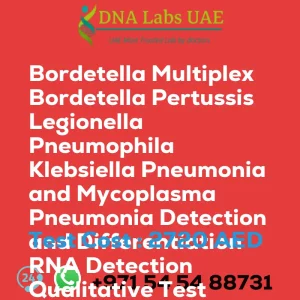CULTURED AEROBIC BACTERIA IDENTIFICATION AND SENSITIVITY Test
Test Cost: AED 500.0
Symptoms Diagnosis: This test is used to identify and determine the sensitivity of cultured aerobic bacteria in infections.
Test Components:
- Price: 500.0 AED
Sample Condition: Submit pure isolate on appropriate media. Ship refrigerated. DO NOT FREEZE. Specify collection site and provide brief clinical history.
Report Delivery: Sample daily by 3.30 pm; Report within 3 days
Method: Sub-culture, Automated identification and Sensitivity
Test Type: Infections
Doctor: Physician
Test Department:
Pre Test Information: No special preparation required
Test Details:
- Isolation of bacteria: The first step is to isolate the bacteria from the sample. This is typically done by streaking the sample onto a solid agar medium and incubating it under appropriate conditions.
- Colony morphology: After incubation, the colonies that grow on the agar medium are examined for their size, shape, color, and texture. This can provide initial clues about the identity of the bacteria.
- Gram staining: The next step is to perform a Gram stain on the isolated colonies. This staining technique differentiates bacteria into Gram-positive and Gram-negative based on their cell wall structure. This information helps narrow down the potential bacterial species.
- Biochemical tests: Biochemical tests are performed to further identify the bacteria. These tests involve the use of specific substrates or reagents to detect the presence or absence of certain enzymes or metabolic pathways in the bacteria. Examples of biochemical tests include catalase test, oxidase test, and fermentation tests.
- API strips: In some cases, API (Analytical Profile Index) strips are used for bacterial identification. These strips contain a series of miniaturized biochemical tests that can rapidly identify a wide range of bacterial species.
- Antimicrobial susceptibility testing: Once the bacteria are identified, antimicrobial susceptibility testing is performed to determine the sensitivity of the bacteria to different antibiotics. This is typically done using methods such as disk diffusion or broth dilution.
- Interpretation of results: The results of the identification and sensitivity test are interpreted based on established guidelines or breakpoints. These guidelines provide information on the appropriate antibiotics to use for treating infections caused by the identified bacteria. It is important to note that the exact methods and tests used may vary depending on the laboratory and the specific bacteria being tested.
| Test Name | CULTURED AEROBIC BACTERIA IDENTIFICATION AND SENSITIVITY Test |
|---|---|
| Components | |
| Price | 500.0 AED |
| Sample Condition | Submit pure isolate onappropriate media. Ship refrigerated. DO NOT FREEZE. Specify collection site and provide brief clinical history. |
| Report Delivery | Sample Daily by 3.30 pm; Report 3 days |
| Method | Sub-culture, Automated identification and Sensitivity |
| Test type | Infections |
| Doctor | Physician |
| Test Department: | |
| Pre Test Information | No special preparation required |
| Test Details | The identification and sensitivity test for cultured aerobic bacteria involves several steps: 1. Isolation of bacteria: The first step is to isolate the bacteria from the sample. This is typically done by streaking the sample onto a solid agar medium and incubating it under appropriate conditions. 2. Colony morphology: After incubation, the colonies that grow on the agar medium are examined for their size, shape, color, and texture. This can provide initial clues about the identity of the bacteria. 3. Gram staining: The next step is to perform a Gram stain on the isolated colonies. This staining technique differentiates bacteria into Gram-positive and Gram-negative based on their cell wall structure. This information helps narrow down the potential bacterial species. 4. Biochemical tests: Biochemical tests are performed to further identify the bacteria. These tests involve the use of specific substrates or reagents to detect the presence or absence of certain enzymes or metabolic pathways in the bacteria. Examples of biochemical tests include catalase test, oxidase test, and fermentation tests. 5. API strips: In some cases, API (Analytical Profile Index) strips are used for bacterial identification. These strips contain a series of miniaturized biochemical tests that can rapidly identify a wide range of bacterial species. 6. Antimicrobial susceptibility testing: Once the bacteria are identified, antimicrobial susceptibility testing is performed to determine the sensitivity of the bacteria to different antibiotics. This is typically done using methods such as disk diffusion or broth dilution. 7. Interpretation of results: The results of the identification and sensitivity test are interpreted based on established guidelines or breakpoints. These guidelines provide information on the appropriate antibiotics to use for treating infections caused by the identified bacteria. It is important to note that the exact methods and tests used may vary depending on the laboratory and the specific bacteria being tested. |







